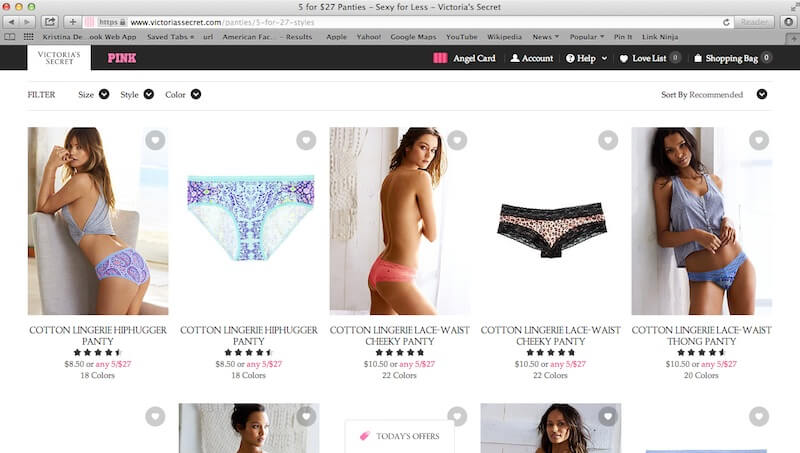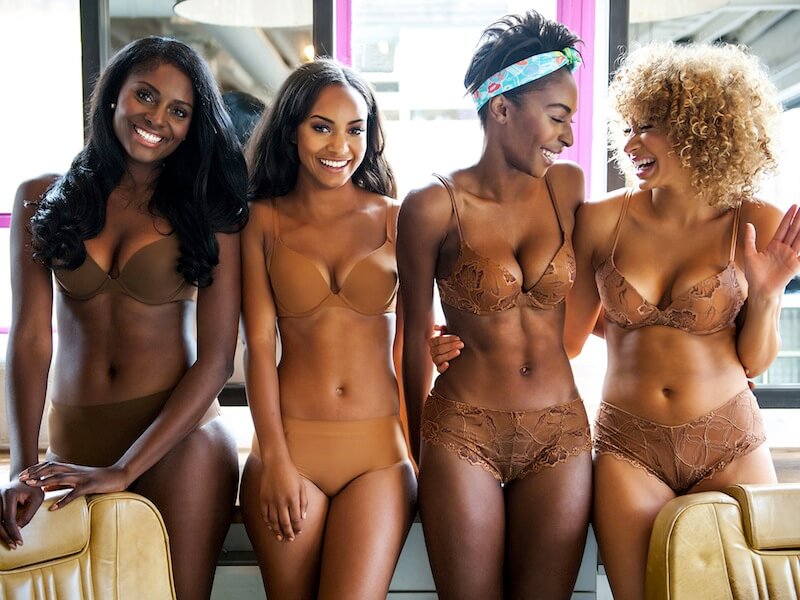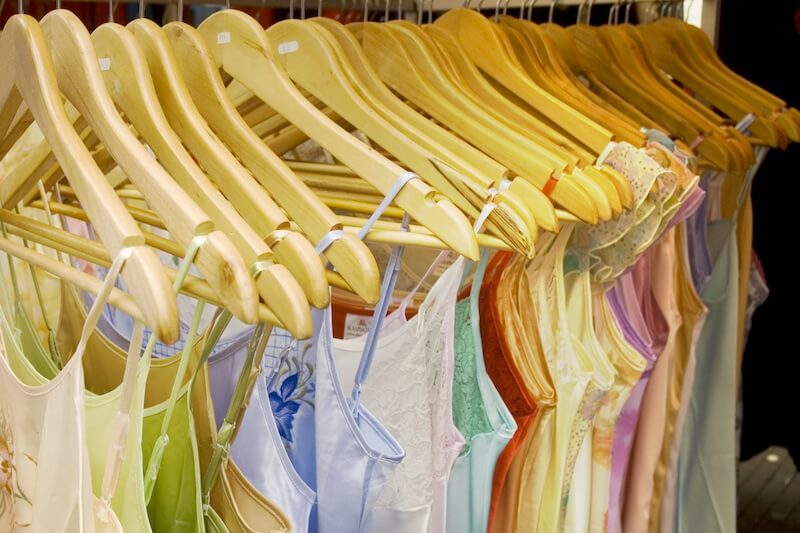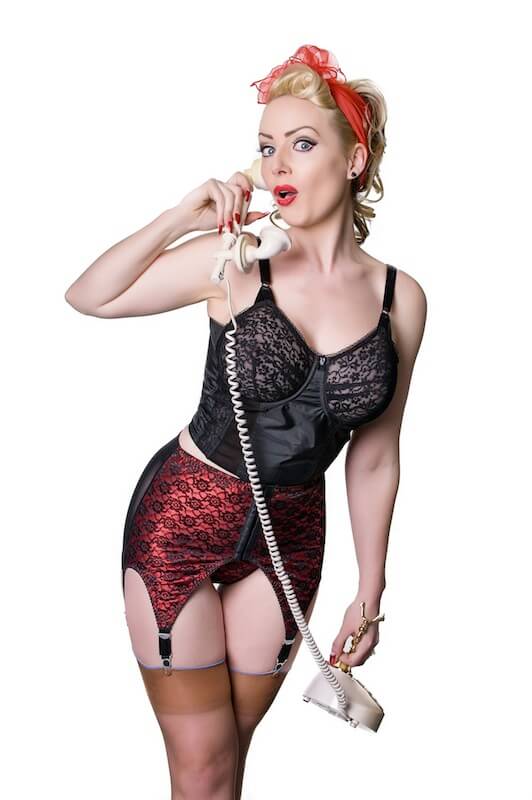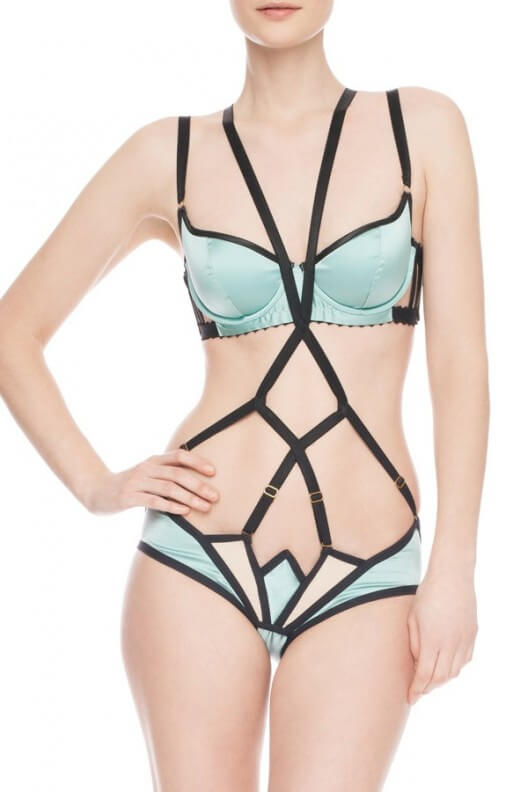Insider Secrets: 5 Things Lingerie Retailers Don’t Want You To Know
 You could say I've been around the block. The lingerie block, that is. I've spent a lot of time designing, researching trends, meeting with buyers, and learning about the market. But it wasn't until this past year when I launched my own online boutique and became a lingerie buyer myself that I got a glimpse into the world of retail and why buyers make some of the decisions they do.
You could say I've been around the block. The lingerie block, that is. I've spent a lot of time designing, researching trends, meeting with buyers, and learning about the market. But it wasn't until this past year when I launched my own online boutique and became a lingerie buyer myself that I got a glimpse into the world of retail and why buyers make some of the decisions they do.
As an avid shopper, I’ve always wondered why things were priced the way they were or why I couldn’t find specific styles in the market. Well, it turns out I wasn’t alone! After months of studying how to be an effective buyer, I’m finally beginning to understand the flip side of the coin and it’s given me a whole new perspective on shopping. Here are a few of the things I’ve learned this year that may change your perspective during your next shopping trip.
1. Pricing structure and deals
Have you ever noticed how some stores will offer a pair of underwear at a certain price, but the price drops dramatically if you buy three or five of them? This technique is meant to get customers buying more --- and it works most of the time, since it sounds like you’re getting an amazing deal.
In reality, the reduced price you’re paying per style after the discount is the actual retail price that the buyer has decided to charge. However, since the store wants you to buy more, they are giving you an incentive by marking that product up an additional 50% if you choose to just buy just the one. It’s almost like being punished for shopping small! While this is a win-win situation for the retailer, it can be frustrating for the consumer and has often left me feeling like I’ve overpaid no matter which route I take.
From the customer’s perspective there is no way around this pricing technique. However, I do recommend doing your research and making sure you’re satisfied with the fabric and fit before committing to the deal. It’ll save you time and eventually money in the long run.
2. Extended sizes and colors
Recently I’ve learned how, because of limited budgets, smaller retailers are not always able to carry a wide range of sizes and colors to offer their customers. A bootstrap company is working with tight funds, and trying to accommodate all body types can be costly if that's not their specialization. And while I’ve been made more aware of this over the last few years, I still had a hard time understanding why larger retailers didn’t cater to these underserved markets either. After all, they’re the ones with the big bucks, right?
Now that I’ve crossed over to the other side, I am seeing first hand how costly catering to all sizes, shapes, and colors really can be. Considering how many bra sizes exist out there, you’re talking upwards of 20 for standard sizing alone ---not including extended size bands and cups. Any retailer who is stocking multiple pieces of each size would not have the means or manpower to buy, say, 40 or more of just one style/color to fit all potential customer needs. Not only would that blow their budget on just a few styles, but also be a nightmare to manage.
The good news is that more indie brands are popping up that specialize in those hard-to-find pieces. These labels tend to be smaller and you may have to order them online, but they are often experts in their field and supporting them could help make them more readily available to customers in the future.
3. Variations and lack of consistency
Inconsistency is one of my biggest pet peeves when shopping for lingerie. I hate falling in love with a style, buying it in a bunch of colors... and then finding out once I get home that the fit or fabric is different than my beloved original. The lack of consistency leaves me feeling, well… kind of ripped off.
The truth is, big retailers don’t always make all of their own products. Many hire manufacturers to design, produce, and oversee the goods under their store’s name. These suppliers work hard to stay true to the retailer’s vision and go through a rigorous approval process before the goods are made available.
However, suppliers and factories are also put under a lot of pressure to meet deadlines. When they start running behind or their quality starts to suffer, they may be dropped in favor of someone else. These new manufacturers take over where the previous ones left off and, while they try to match the product seamlessly, there will always be some deviations. Fabrics may have a little more stretch, the fit may be a little looser, etc.
Unfortunately, this is the nature of the industry and I can’t blame the buyers for pushing to receive the very best (or at least as close to it as they can get in their time frame). But for your own sake, I'd recommend checking each garment out before you buy, to ensure that everything you are looking for is there.
4. Customer Service (or lack thereof)
Years of experience have taught me that the bigger the company, the worse the customer service is. They tend to take a less personal approach and have customer service representatives who don't work closely with the product. These established companies also have loads of returning customers and therefore can, at times, view them as expendable.
Smaller designers tend to value the customer interaction more since they know that happy customers make for returning customers. For companies like these, maximizing their reach as well as their dollar goes a long way and a negative review has the ability to make or break them. It’s in their best interest to offer outstanding customer service at all times. And since they are so small, chances are they are also working closely with the product and have a passion for what they are doing. Brands like these can be a pleasure to work with on both the consumer and buying end.
Of course, there are plenty of big brands with great customer service and plenty of smaller labels with terrible customer service! But if a personalized experience and expert know-how is something you are seeking, then an indie brands is often the way to go.
5. International and foreign brands
As a world traveler and follower of all things lingerie, I love scoping out the newest labels from different countries and discovering new talents. But one source of frustration is how these brands never seem to make it stateside, no matter how popular they become in their own countries. Why don’t more lingerie boutiques carry these awesome labels in their stores? Yes, they can be purchased online, but I want to feel them and try them on before I commit.
Not much of a surprise here --- shipping overseas is costly! But when you're dealing with larger quantities for resale, the charges really start to add up. High taxes and duties in addition to the fact that it's impossible to guarantee their sales, makes buying these brands a risky endeavor. While I'd love to carry more of my favorite international brands on my site, it's a safer bet for a small store like me to stick with domestic vendors until I have a more encompassing budget and loyal customers.
What do you think about how lingerie retailers operate? Have you had any memorable experiences, good or bad?





